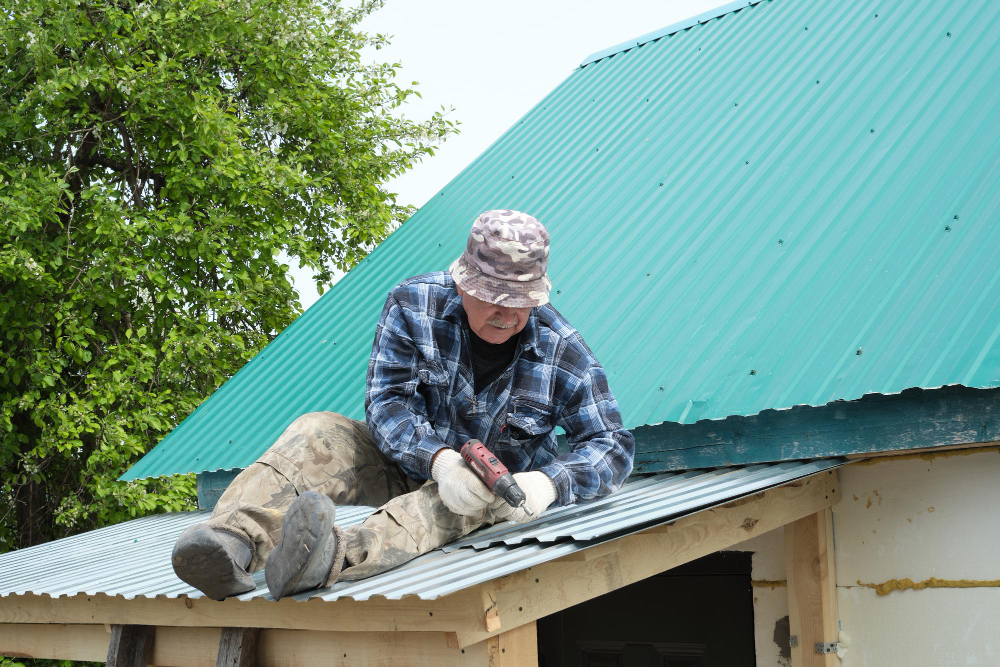Last updated on
When it comes to maintaining the integrity and longevity of a home, the roof plays a crucial role as the first line of defense against the elements. However, over time, even the most robust roofs can succumb to wear and tear, necessitating repairs or replacements.
Homeowners are often faced with a critical decision: should they hire a professional roofer or attempt to tackle the project themselves through DIY roof repairs?
This choice is not one to be taken lightly, as it can have far-reaching implications for both the homeowner’s safety and the overall condition of the property. On one hand, DIY roof repairs may seem like a cost-effective solution, appealing to those with a knack for hands-on projects.
On the other hand, hiring a professional roofer offers the assurance of expert craftsmanship, adherence to building codes, and the peace of mind that comes with a warranty-backed job.
The Allure of DIY Roof Repairs

For many homeowners, the idea of tackling roof repairs themselves holds a certain appeal. Perhaps it’s the satisfaction of a job well done, or the potential cost savings that draw them in. After all, why pay someone else when you can roll up your sleeves and do it yourself?
There’s no denying that DIY roof repairs can be cost-effective, especially for minor issues like replacing a few shingles or sealing a small leak. With the right tools, materials, and a bit of elbow grease, you might be able to patch things up without breaking the bank.
However, it’s crucial to consider the risks involved. Roofing projects, even seemingly minor ones, can be dangerous if you’re not properly trained and equipped. Falls from heights, exposure to hazardous materials, and improper installation techniques can all lead to costly mistakes or even injuries.
The Expertise of Professional Roofers
On the other hand, hiring a professional roofer brings a wealth of experience and expertise to the table. These highly trained individuals have spent years honing their craft, ensuring they can tackle even the most complex roofing issues with ease.
Professional roofers not only have the necessary skills and equipment to complete the job safely and efficiently, but they also have a deep understanding of building codes, regulations, and best practices. This knowledge can be invaluable, especially when it comes to ensuring your roof meets local standards and is installed correctly to withstand the elements.
Additionally, reputable roofing companies typically offer warranties on their workmanship, providing you with added peace of mind and protection against potential defects or issues down the line.
Cost Considerations: DIY Roof Repairs Vs. Hiring Professionals
One of the primary factors that often sways homeowners towards DIY roof repairs is the perceived cost savings. After all, if you’re doing the work yourself, you’re only paying for materials, right? Well, not quite.
While the upfront costs of a DIY project may seem lower, it’s essential to consider the potential long-term expenses. Improper installation or repairs can lead to more significant problems down the road, requiring even costlier fixes. Not to mention, you’ll need to factor in the cost of any specialized tools or equipment you may need to purchase for the job.
On the other hand, hiring a professional roofer may seem like a more expensive option initially, but the investment can pay off in the long run. Professional roofers typically offer competitive pricing based on their expertise and experience, and their work is backed by warranties and guarantees, providing added value for your money.
Safety First: The Risks of DIY Roofing
While cost is undoubtedly a crucial consideration, it’s important to prioritize safety when it comes to roofing projects. Attempting DIY roof repairs can be incredibly dangerous, especially if you’re not properly trained or equipped.
Roofing involves working at heights, often on sloped or uneven surfaces, increasing the risk of falls and injuries. Additionally, you’ll be exposed to potential hazards like loose shingles, nails, and other debris that could cause harm if not handled correctly.
Professional roofers, on the other hand, are trained in safety protocols and equipped with the necessary gear to minimize risks. They understand the importance of fall protection, proper ladder usage, and other safety measures to ensure the job is completed without incident.
Tackling Unique Roofing Challenges

Different types of roofs come with their own unique set of challenges. For instance, flat roof repair requires specialized knowledge and techniques to address issues like ponding water, which can lead to leaks, moisture damage, and even structural problems if not handled properly.
Professional roofers have the expertise to identify and resolve these problems before they escalate, ensuring the longevity and integrity of your roof, whether it’s flat or sloped.
The Takeaway
As you can see, the decision between hiring a professional roofer or attempting DIY roof repairs is not a simple one. While the allure of cost savings and the satisfaction of a job well done may initially draw you towards DIY, it’s crucial to weigh the potential risks and long-term implications carefully.
Professional roofers bring a level of expertise, safety, and peace of mind that can be invaluable when it comes to protecting one of your home’s most critical components. Their experience and knowledge can help ensure the job is done right the first time, saving you from potential headaches and costly repairs down the line.
Ultimately, the choice will depend on your specific circumstances, the extent of the roofing project, and your comfort level with heights and hazardous materials. By considering factors like safety, long-term costs, and the complexity of the job, you can make an informed decision that aligns with your priorities and protects your home’s integrity.
Table of Contents




